Abstract
A change in the size of a fixed-ratio schedule involves a simultaneous change in number of responses, in time to complete the ratio (work time), and in the interval between successive reinforcements (interreinforcement interval). Previous studies have suggested the importance of work time and the interreinforcement interval in controlling the length of the post-reinforcement pause. The present study sought to determine whether number of responses is also a significant factor. Pigeons were trained on a multiple fixed-ratio x fixed-ratio 2 plus timeout schedule in which the size of the fixed-ratio x was manipulated. When the work times (Experiment I) or interreinforcement intervals (Experiment II) were equated for the two components, the pause before the fixed-ratio x was longer than the pause before the fixed-ratio 2 plus timeout. As fixed-ratio x size increased, the relative difference in the lengths of the two types of pauses also increased. Because the fixed-ratio x component contained a larger number of responses than the fixed-ratio 2 plus timeout component, the relatively longer pause preceding the fixed-ratio x indicates that number of responses played a significant role in determining the length of the post-reinforcement pause.
Full text
PDF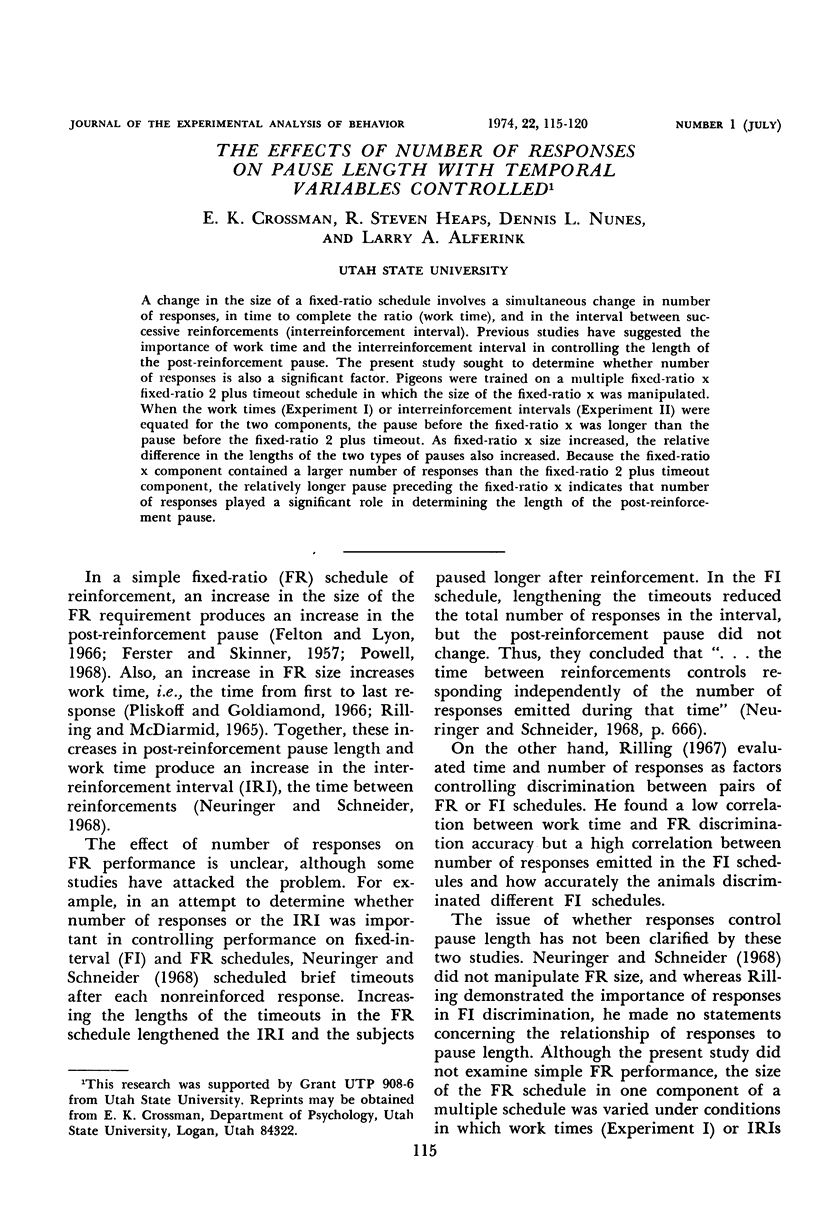
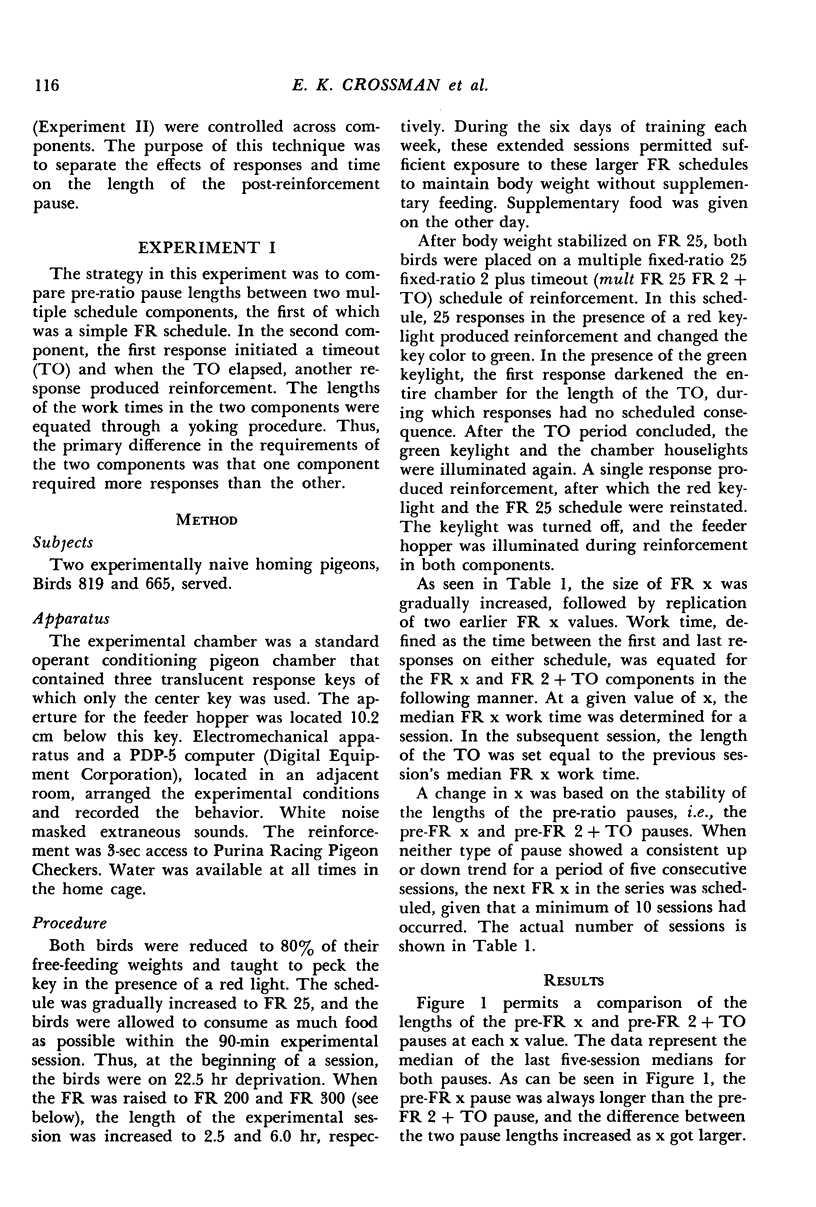
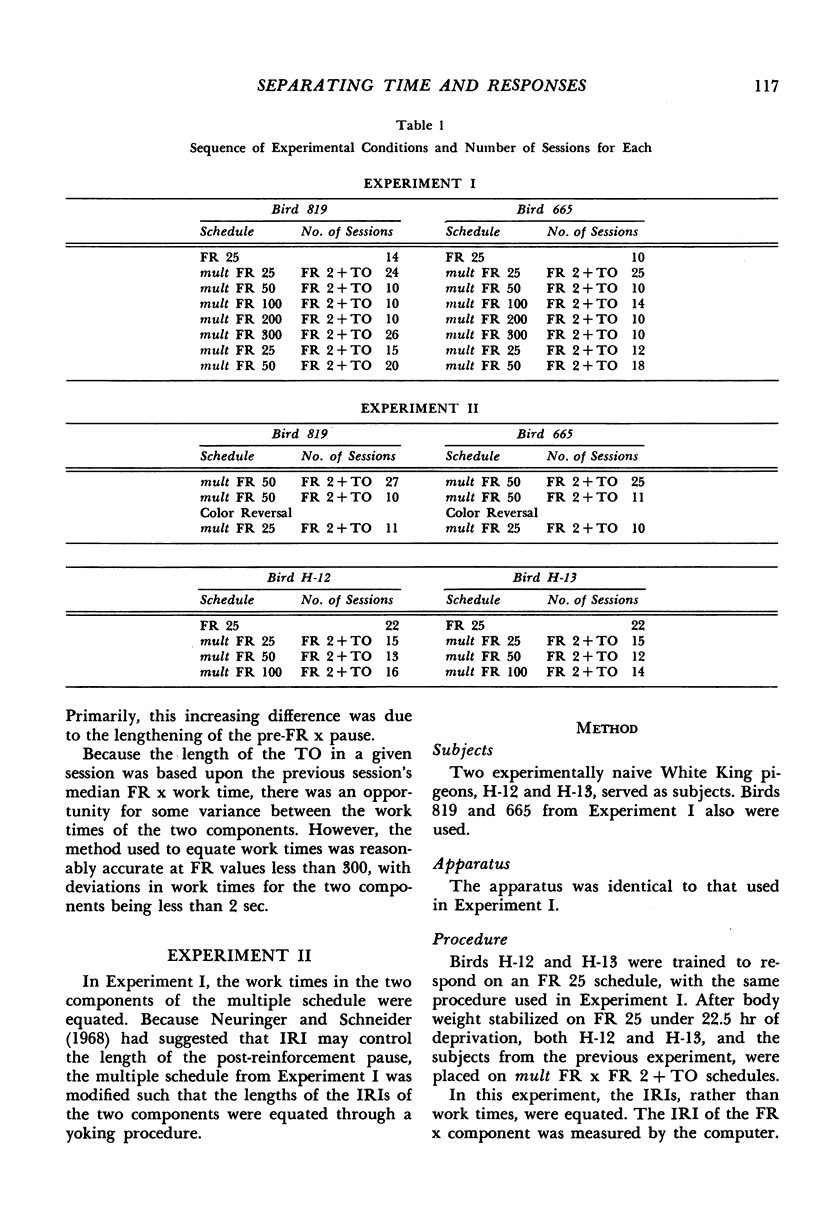
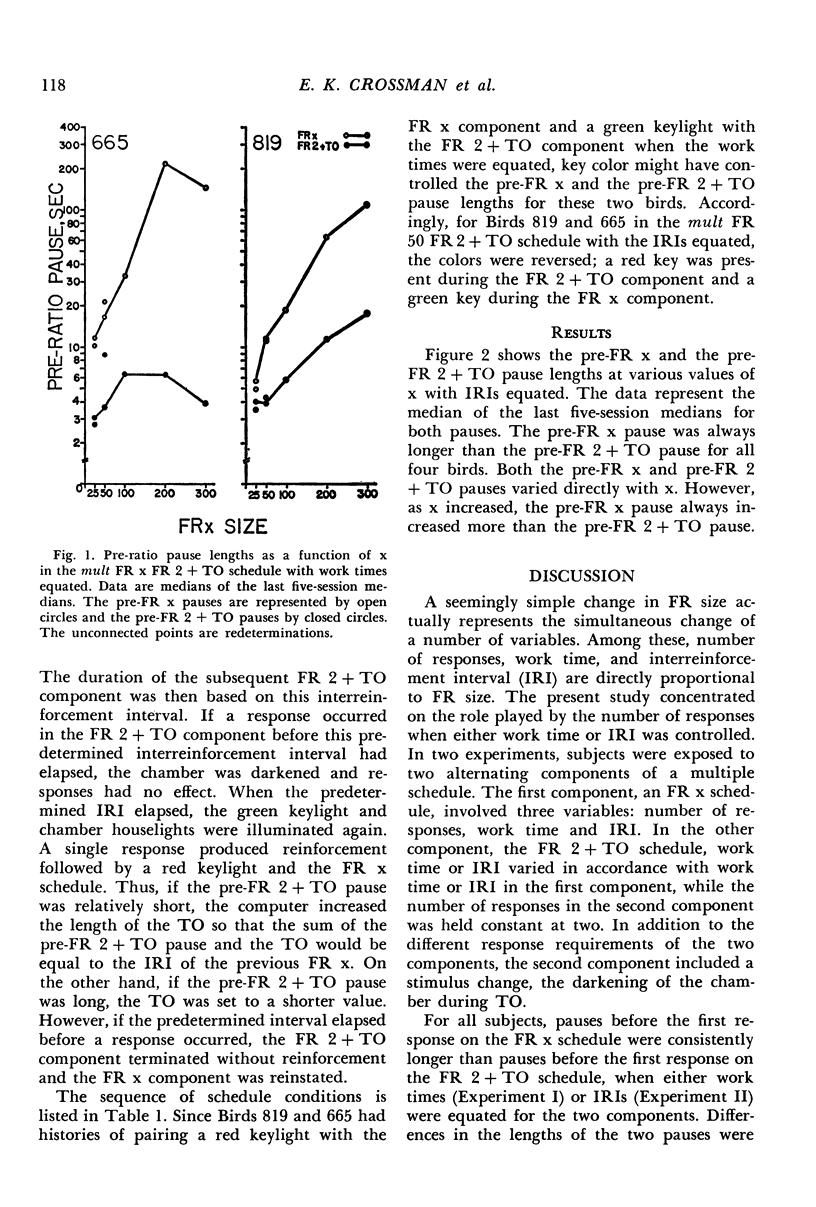
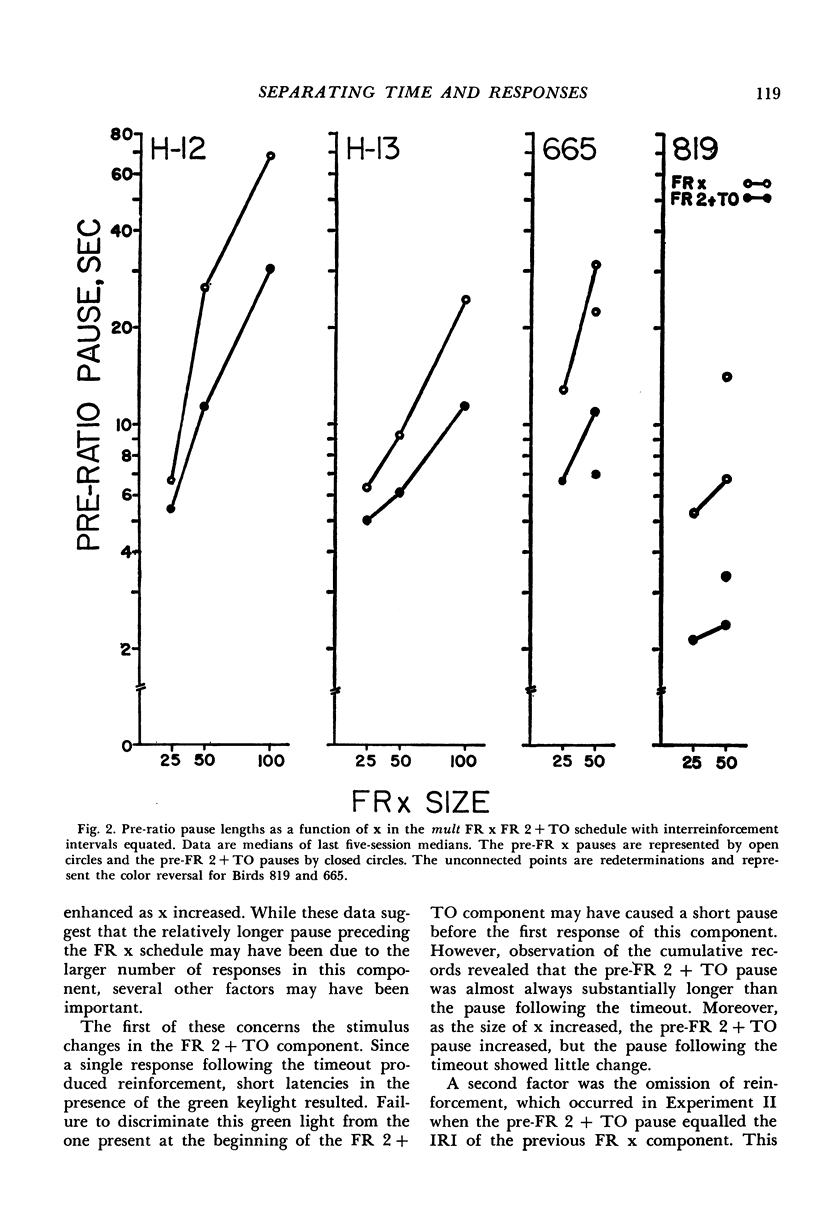

Selected References
These references are in PubMed. This may not be the complete list of references from this article.
- Felton M., Lyon D. O. The post-reinforcement pause. J Exp Anal Behav. 1966 Mar;9(2):131–134. doi: 10.1901/jeab.1966.9-131. [DOI] [PMC free article] [PubMed] [Google Scholar]
- Killeen P. Reinforcement frequency and contingency as factors in fixed-ratio behavior. J Exp Anal Behav. 1969 May;12(3):391–395. doi: 10.1901/jeab.1969.12-391. [DOI] [PMC free article] [PubMed] [Google Scholar]
- Neuringer A. J., Schneider B. A. Separating the effects of interreinforcement time and number of interreinforcement responses. J Exp Anal Behav. 1968 Nov;11(6):661–667. doi: 10.1901/jeab.1968.11-661. [DOI] [PMC free article] [PubMed] [Google Scholar]
- Pliskoff S. S., Goldiamond I. Some discriminative properties of fixed ratio performance in the pigeon. J Exp Anal Behav. 1966 Jan;9(1):1–9. doi: 10.1901/jeab.1966.9-1. [DOI] [PMC free article] [PubMed] [Google Scholar]
- Powell R. W. The effect of small sequential changes in fixed-ratio size upon the post-reinforcement pause. J Exp Anal Behav. 1968 Sep;11(5):589–593. doi: 10.1901/jeab.1968.11-589. [DOI] [PMC free article] [PubMed] [Google Scholar]
- RILLING M., MCDIARMID C. SIGNAL DETECTION IN FIXED-RATIO SCHEDULES. Science. 1965 Apr 23;148(3669):526–527. doi: 10.1126/science.148.3669.526. [DOI] [PubMed] [Google Scholar]


